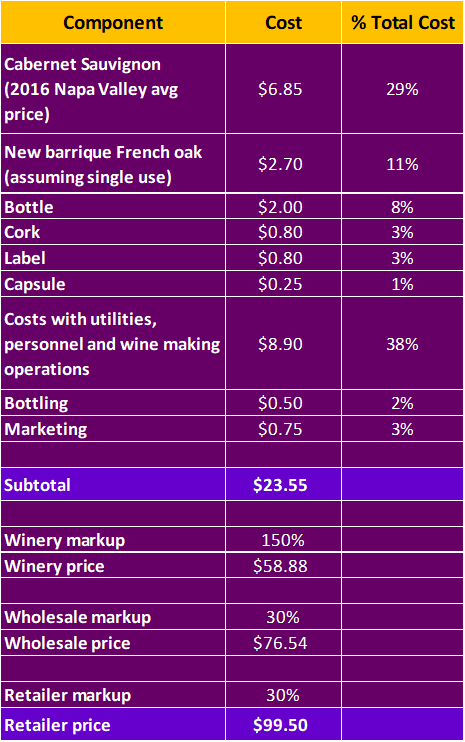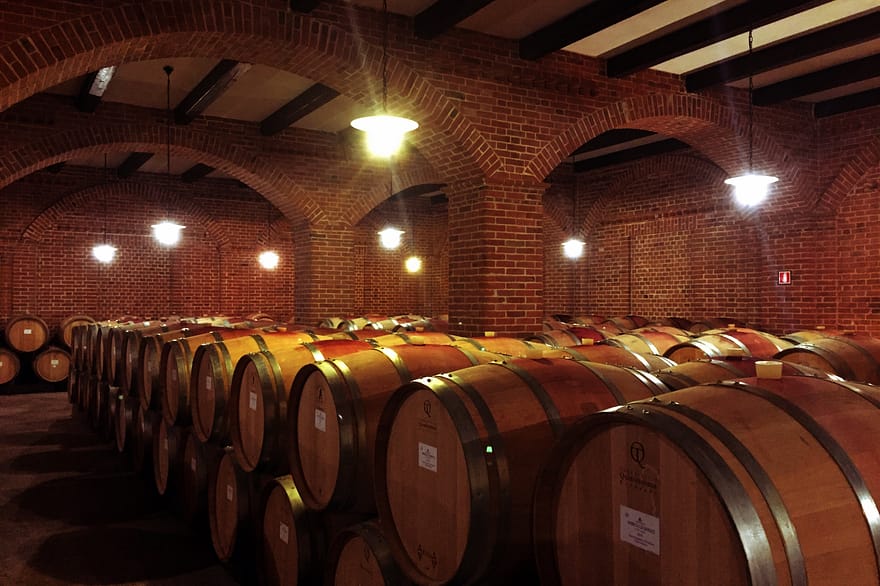When blind-shopping for wine, we silently hope that each extra dollar will convert into an extra nugget of quality. If you’ve been through that road before and all you tasted was disappointment, you are not alone. If the dollar x quality ratio was true, a bottle priced at $100 would be 10 times better than one of $10. It would be the much easier to pick wines from the shelf.
In the end of the day it bothers me how much more we end up thinking about the price of the bottle than the taste of the wine in our glass.
Very often two questions come up when taste, price and wine are in the same discussion:
- Why is that wine so expensive?
- How much is enough paying for a good bottle of wine?
Before digging deeper, a distinction must be made between value and price. I might be willing to pay a higher price if a bottle is perceived as higher value to me. That could be either because it is hard to find, or I have a special story attached to it, or because I am preparing bistecca alla Fiorentina for dinner and no other bottle would make a better pairing for me.
Common sense and perception of value. Everyone has one of their own.
Value is a highly subjective concept. Every person has different criteria on what composes value when it comes to wine. Price, on the other hand, is a more defined aspect. It can be measured by the digits plugged on the tag of a bottle. That will be the focus of this discussion.
What are the costs behind a bottle of wine?
To get down to the cost breakdown of a bottle, we’ll take a use case. I’ll pick a wine bottle that has a retail price of $100, to simplify the view. Let’s pick for this study a premium bottle of Cabernet Sauvignon, from California, Napa Valley 2016. Those can easily reach three-digit figures. We will get the details and average prices of the grapes from the California Grape Crush Report 2016.
According to the report, Cabernet Sauvignon grapes was traded in average for about $6.85K/ton in 2016 in Napa. Considering it would take about 1kg of grapes to make a premium bottle of wine, we land at about $6.85 in grapes per bottle. For the barrique we will choose new French oak for a single use, which costs about $800. Each barrique holds 225 liters of wine, that translates into 300 bottles (ignoring losses). This way, the barrique will add $2.7 to the cost of each bottle.
Let’s consider a small to medium size winery for the fixed costs. Based on a report from the UC Davis Department of Agriculture (2008), and adjusting to today’s rates, we can estimate that the costs of wine making operations, utilities and personnel contribute in $8.90 to the cost of each bottle, for our use case.
With the glass bottle, labels, capsules and marketing we find that our 2016 Cabernet Sauvignon from Napa Valley would have a total cost of about $23. The average margin of a boutique producer with a good demand on the market is on the rage of 100% to 150%. Taking the upper limit, our bottle finds its first price out of the winery, of about $58.
Before you pop open that bottle, it will still have its price inflated by the margins from the wholesales and the retailer. My estimate is that by the time it reaches the shelf of your preferred wine store, that bottle will be priced at about $99.50. There we have, our $100 wine bottle. (see details on the breakdown at the spreadsheet at the end of this post).
What if, due to a family event, you end up ordering that same bottle for dinner in a restaurant instead? We are talking about an extra 30-50% markup. Depending on where the restaurant is located and the profile of its target public, it can reach even higher numbers. With that, our Cab will contribute in $150 to the bill of the evening.

How much is enough paying for a good bottle of wine?
After all this drafting, the second question from the beginning of the post becomes even more relevant. How much is enough to pay for a bottle of wine?
According to statistics, published by the Vivino website, an average bottle of red wine (3.6 rating) costs $15.66 USD while a very good bottle of wine (4.0 rating) costs $32.48 USD on average. The curve of price vs average rating becomes rather steep after that.
Is it fair to say that around $30 is a good spot to be, before the price skyrockets and you won’t get as much for that extra dollar?
That still depends. Once the price is enough to cover for a good quality (or to produce a good wine with typicity), the overhead will be due to specifics of that wine. There are a few factors than can segment wine into price ranges. The main ones are the location where the wine is produced, weather in a given year, how particular is the production method and gaps between supply and demand. Aging potential can also play a role on price tag. Those factors are not mutually exclusive. In fact, they often come in different combinations between them.
Value and price. It comes down to the balance between how much value you perceive in a wine bottle and how much are you willing to pay for it.
Now, that math exercise makes me wonder… when looking at those bottom shelf bottles of $2, is it really wine they put in it..?

